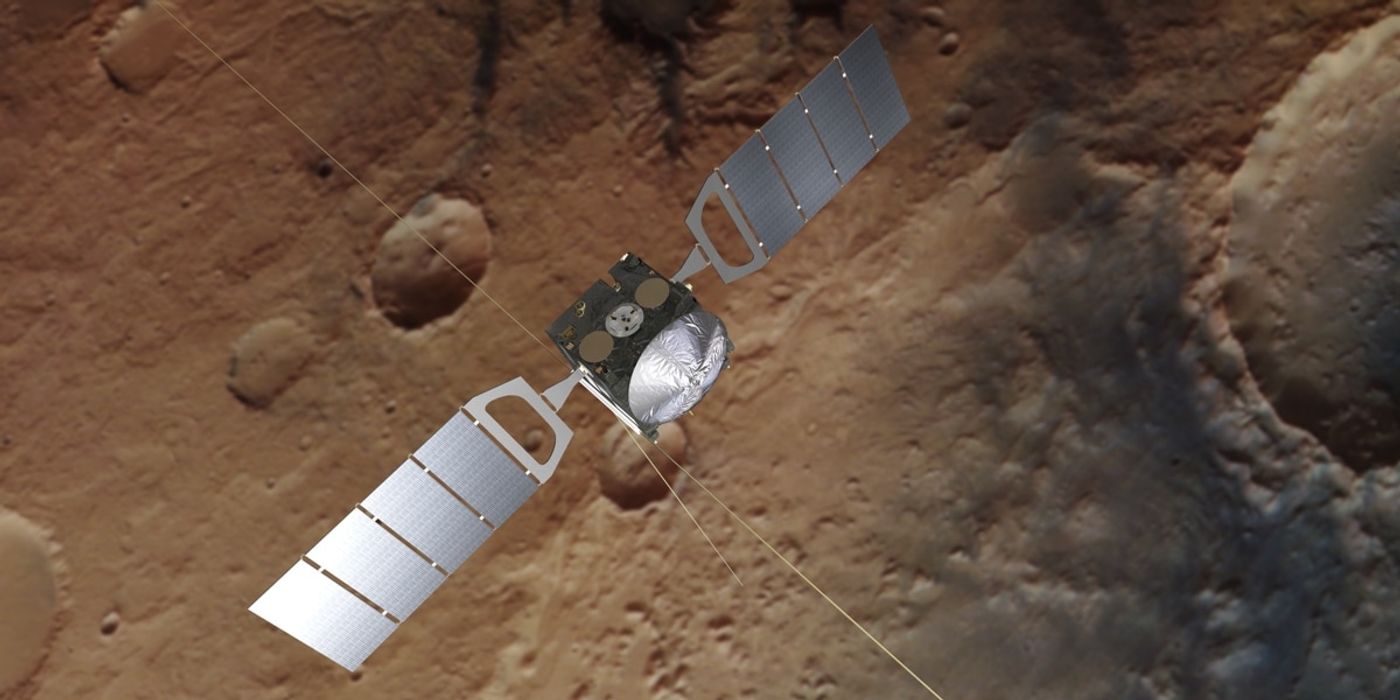Scientists Validate the Curiosity Rover's 2013 Detection of Methane on Mars
In 2013, NASA’s Curiosity Rover detected a spike of methane gas in the Martian atmosphere. It was particularly exciting news at the time because methane is often a chemical byproduct of living organisms on Earth. On the other hand, methane can also be produced by geological processes, and so the discovery doesn’t automatically mean that life exists on the red planet.
A significant discovery like this one should have been confirmed with a second source shortly after being detected, but for whatever reason, that wasn’t the case. Fortunately, researchers are now picking up the slack nearly six years later. A new paper has been published this week in the journal Nature Geoscience after a team of researchers used data from the ESA’s Mars Express spacecraft to validate the Curiosity Rover’s 2013 findings.
Image Credit: Spacecraft image credit: ESA/ATG medialab; Mars: ESA/DLR/FU Berlin
“In general, we did not detect any methane, aside from one definite detection of about 15 parts per billion by volume of methane in the atmosphere, which turned out to be a day after Curiosity reported a spike of about six parts per billion,” elucidated study lead author Marco Giuranna.
“Although parts per billion in general means a relatively small amount, it is quite remarkable for Mars—our measurement corresponds to an average of about 46 tons of methane that was present in the area of 49,000 square kilometers observed from our orbit.”
Related: NASA brings tightening MAVEN's orbit around Mars in preparation for the Mars 2020 rover
As it turns out, methane gas doesn’t tend to last very long in the Martian atmosphere, and with that in mind, the methane that Curiosity detected in 2013 must have been produced somewhat recently. While this much is clear to planetary scientists, one blistering question remains: where did Mars’ methane actually come from?
The newly-published paper doesn’t reveal a definitive source of the methane gas on Mars, which isn’t particularly surprising given the lack of answers concerning the matter. On the other hand, it’s the first independent confirmation that Curiosity’s methane detection was anything but a fluke. Given the circumstances, researchers can’t do much apart from speculate about its source.
“Our new Mars Express data, taken one day after Curiosity’s recording, change the interpretation of where the methane originated from, especially when considering global atmospheric circulation patterns together with the local geology,” Giuranna added. “Based on geological evidence and the amount of methane that we measured, we think that the source is unlikely to be located within the crater.”
Related: An inside look at the progress being made on the Mars 2020 rover
Upon doing some additional probing into the source of the methane, the researchers found that it may have originated East of Gale Crater. There, a bevy of geological faults exist; these may have ruptured permafrost in the area, freeing any methane gas that might’ve been trapped inside of it in the process. The novel idea is merely hypothetical, of course.
Without more data, it’s challenging to discern exactly where the methane gas on Mars came from. On the other hand, space agencies are ramping up Martian exploration as we speak, and it’s hoped that some of these missions could provide the insight we need for solving such mysteries. With that in mind, it should be interesting to see what we’ll learn as planetary scientists continue their search.
Source: ESA via The Guardian, Nature Geoscience









